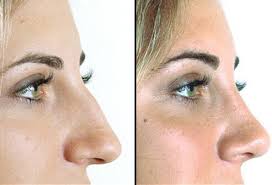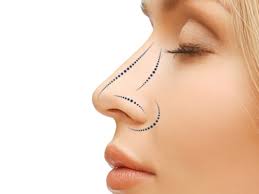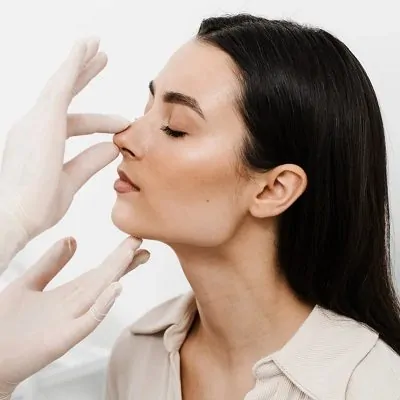Revision Rhinoplasty: When and Why You Might Need a Second Procedure

Strong 8k brings an ultra-HD IPTV experience to your living room and your pocket.
Rhinoplasty is a highly specialized surgical procedure designed to enhance the shape, function, and overall appearance of the nose. While many patients are satisfied with their initial results, some may find that a revision rhinoplasty — a second corrective surgery — becomes necessary. Whether due to aesthetic concerns, functional issues, or complications, revision rhinoplasty
(جراحة تجميل الأنف في الرياض) is an important option for those seeking to refine or improve upon their first surgery.
In this article, we’ll explore when and why you might need revision rhinoplasty, what the procedure involves, and how to prepare for it.
What Is Revision Rhinoplasty?
Revision rhinoplasty, sometimes called secondary rhinoplasty, is a follow-up surgical procedure performed to correct or improve the results of a previous nose surgery. It can address a variety of concerns ranging from cosmetic dissatisfaction to breathing difficulties caused or unresolved by the initial operation.
Common Reasons for Revision Rhinoplasty
1. Unsatisfactory Cosmetic Results
One of the most common reasons patients seek revision rhinoplasty is because they are unhappy with the appearance of their nose after the first surgery. This can include:
Persistent asymmetry or unevenness.
Over- or under-correction of nasal features.
A tip that is too bulbous, droopy, or pinched.
Unnatural-looking shape or contours.
Visible irregularities such as bumps or indentations.
Since rhinoplasty is complex and highly individual, slight imperfections may become more noticeable once swelling subsides, motivating patients to seek refinement.
2. Functional Problems
Some patients develop or continue to experience nasal obstruction, difficulty breathing, or chronic congestion after their initial rhinoplasty. Revision surgery can correct:
Deviated septum or cartilage collapse.
Scar tissue or adhesions blocking nasal passages.
Structural weakness leading to nasal valve collapse.
Improving nasal function is often as important as achieving aesthetic goals.
3. Trauma or Injury
After rhinoplasty, the nose can be vulnerable to injury or trauma. A subsequent accident or impact may alter the nose’s shape or cause functional issues, requiring revision surgery to restore form and function.
4. Healing Complications
In some cases, complications such as excessive scar tissue, infection, or poor wound healing can affect results and necessitate further surgical intervention.
When Should You Consider Revision Rhinoplasty?
Deciding to pursue revision rhinoplasty depends on several factors:
Timing: Surgeons typically recommend waiting at least 12 months after the initial procedure to allow complete healing and resolution of swelling before considering revision.
Goals: Be clear about what you want to improve — cosmetic appearance, breathing function, or both.
Expectations: Revision surgery is often more complex and may have limitations compared to the first surgery.
Consultation: A detailed evaluation by an experienced rhinoplasty surgeon is essential to determine if revision is appropriate and feasible.
What to Expect from Revision Rhinoplasty
Revision rhinoplasty is usually more challenging than the initial surgery due to changes in nasal anatomy, scar tissue, and altered blood supply. Surgeons must carefully assess:
The existing nasal structure and any previous surgical alterations.
The thickness and quality of the skin.
Functional airway status.
Patient’s aesthetic goals.
The procedure may involve:
Rebuilding or reshaping cartilage and bone.
Removing scar tissue.
Correcting structural defects.
Using grafts from other parts of the body (e.g., ear or rib cartilage) to restore support.
Recovery from Revision Rhinoplasty
Recovery timelines for revision rhinoplasty are similar to primary rhinoplasty but may be slightly longer due to the complexity. Expect:
Swelling and bruising for up to two weeks.
Return to daily activities after 1–2 weeks.
Full results may take up to a year to become apparent.
Adhering to post-operative instructions is crucial for optimal healing.
Choosing the Right Surgeon for Revision Rhinoplasty
Because revision rhinoplasty is more intricate, selecting a highly skilled and experienced surgeon is critical. Look for:
Board certification and expertise in rhinoplasty revisions.
A strong portfolio of successful revision cases.
Clear communication and realistic goal-setting.
A comprehensive evaluation process.
Final Thoughts
Revision rhinoplasty offers patients the chance to correct imperfections or functional issues from their first surgery, improving both appearance and quality of life. While it requires patience, careful planning, and an expert surgeon, the results can be incredibly rewarding.
If you are unhappy with your previous rhinoplasty or experiencing breathing problems, consult with a trusted specialist to explore whether revision rhinoplasty is the right choice for you.
Note: IndiBlogHub features both user-submitted and editorial content. We do not verify third-party contributions. Read our Disclaimer and Privacy Policyfor details.







